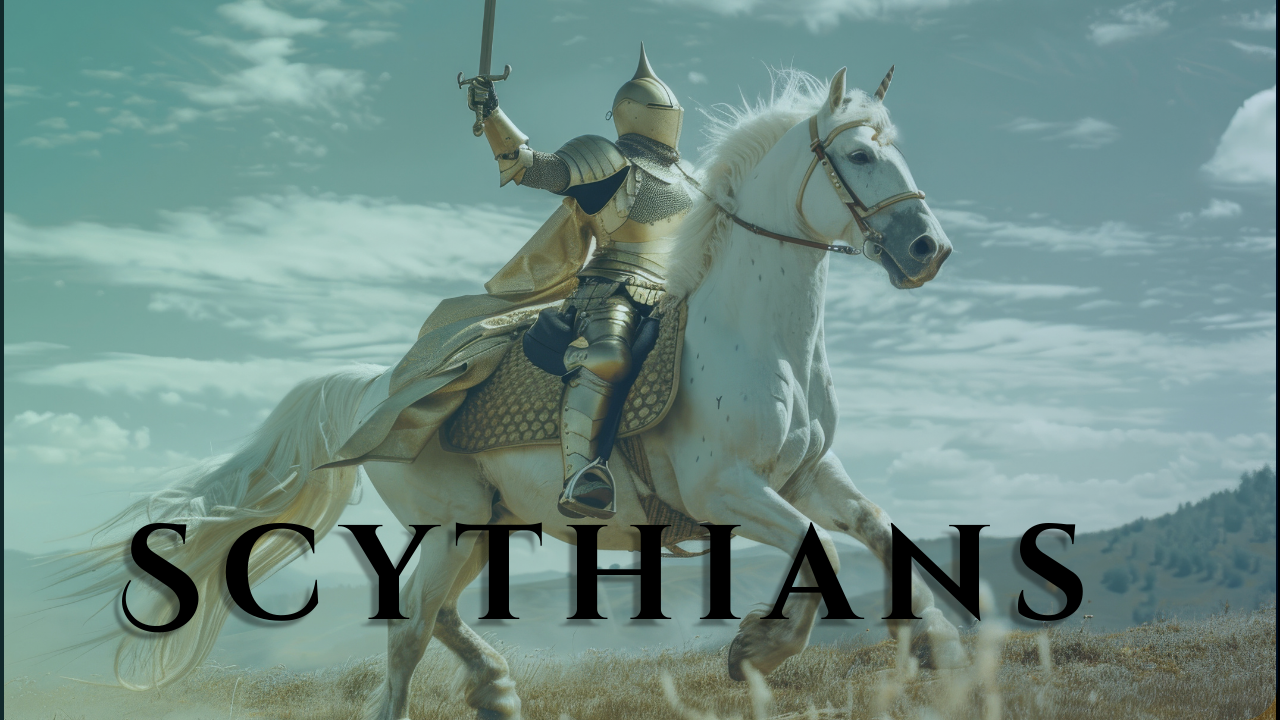Scythians
Context : Scythians
Archaeologists have uncovered evidence of sacrificial funerary rituals at the Early Iron Age burial mound of Tunnug 1 in Tuva, Siberia, revealing that the Scythian culture, known for its horse-riding traditions and distinctive ‘animal-style’ art, may have originated much farther east than previously thought.

More on News
- Among the discoveries were fragmented remains of at least one human and 18 horses, suggesting the animals were sacrificed as part of funerary rituals for an elite individual buried in the mound.
- These remains were found alongside Scythian animal-style artefacts and horse-riding gear, marking this site as one of the earliest examples of the Scythians’ horse-focused funerary practices—practices described in ancient texts thousands of kilometres to the west.
About Scythians
The Scythians were a nomadic people known for their equestrian skills and warrior culture, who thrived between the 7th and 3rd centuries BCE.
Their territory extended across a vast area from the western regions of Thrace to the eastern Altai Mountains in Mongolia, covering parts of what is now Ukraine, southern Russia, and Kazakhstan.
- Origins and Migration: The origins of the Scythians are debated among historians.
- According to Herodotus, they initially inhabited Asia but migrated westward due to pressure from hostile tribes.
- They eventually established dominance over the Pontic steppe, displacing earlier inhabitants such as the Agathyrsi and Cimmerians.
- By the 8th century BCE, they had become the leading power in the region, known for their mounted warfare and ability to navigate the vast steppes.
- Culture and Society: The Scythian society was characterised by a nomadic lifestyle centred around herding and horseback riding.
- They lived in portable dwellings known as yurts and were skilled in crafting items from gold and other materials, which reflected their wealth and status.
- The Scythians also practised elaborate burial customs, often interring their elite in kurgans (burial mounds) filled with grave goods.
- Military Prowess: The Scythians were renowned for their military tactics, particularly their use of mounted archers.
- They employed hit-and-run strategies and ambush tactics effectively against larger armies.
- Notable historical encounters include their resistance against Darius I of Persia during his campaign in 513 BCE, where they successfully harassed the Persian forces, leading to a retreat.
- Decline: Despite their initial successes, the power of the Scythians began to wane by the 4th century BCE due to various factors:
- Military Defeats: They suffered significant defeats at the hands of Philip II of Macedon in 339 BCE and later by Mithridates VI of Pontus.
- Sarmatian Invasion: The Sarmatians, another nomadic group related to the Scythians, began to invade their territories from the east, gradually replacing them as the dominant power in the region.
- Assimilation: By the 3rd century CE, remnants of Scythian culture were assimilated by other groups, including the Goths and later populations moving into the Pontic steppe.
- Legacy: The legacy of the Scythians is evident in their influence on subsequent cultures and societies in Eurasia.
- They contributed to the development of nomadic pastoralism and left behind rich archaeological sites that provide insight into their way of life.
- Modern scholars continue to study their history through archaeological findings and ancient texts to better understand this fascinating nomadic civilization.
Contemporary of Indo-ScythiansThe Scythians, particularly the Indo-Scythians (also known as the Sakas), were contemporaneous with several notable dynasties in India.
|
In summary, the Scythians were a significant force in ancient Eurasian history known for their skilled horsemanship, military tactics, and unique cultural practices. Their rise and fall illustrate the dynamics of nomadic societies in relation to settled civilizations throughout history.
Subscribe to our Youtube Channel for more Valuable Content – TheStudyias
Download the App to Subscribe to our Courses – Thestudyias
The Source’s Authority and Ownership of the Article is Claimed By THE STUDY IAS BY MANIKANT SINGH



